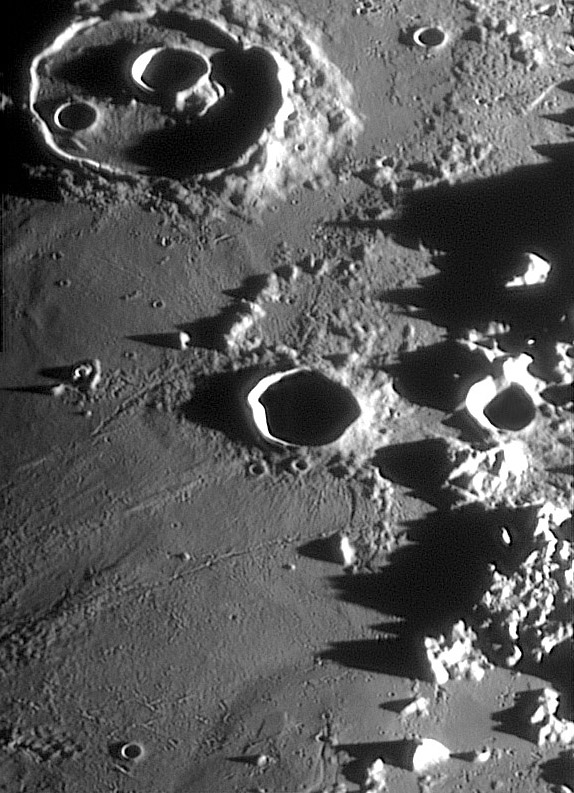
Image by Bruno Daversin
This remarkable image reveals features never before seen by humans. The crater Theaetetus is in the center of the image and Cassini is at the top. But what is amazing are the features on the surface of the mare. In particular, the linear chains south and north of Theaetetus are radial to Aristillus (off the image to the bottom left) and therefore are presumably secondary crater chains. But they are surprisingly closely spaced pits - the ejected material must have been a connected stream of rock. In fact, a high Sun view shows rays along both areas where the chains occur. Between the chains are welts upon the surface which are perhaps continuous deposits of ejecta probably tens of meters thick. At the bottom left are vee shaped secondaries caused as clots of ejecta were blown around their central crater-forming core. After appreciating the small scale roughness of this edge of Mare Imbrium, notice the smoothness of the area at the bottom right - this must be younger mare, but where are its eruption vents? Wondrous image!
Technical Details:
6 April 2006. Ludiver Observatory 600 mm (24″) Schmidt-Cassegrain + webcam + IR filter. CAW note: these crater pit chains are detectable on Lunar Orbiter IV and Clementine images, but not as completely shown as here. The ground resolution is better on the spacecraft images, but the lower lighting on Bruno’s magnificent image reveals more of the surface details. Spaceship Bruno wins again.
Related Links:
Rükl plate 12
Ludiver’s Moon photos
SUPPORT LPOD - VISIT A SPONSOR (CLICK AN AD BELOW)!
Now you can support LPOD when you buy ANY book from Amazon thru LPOD!
COMMENTS?
Click on this icon File:PostIcon.jpg at the upper right to post a comment.



